125 books about Legacy and 6
start with D
125 books about Legacy and 6
125 books about Legacy
6 start with D start with D
6 start with D start with D
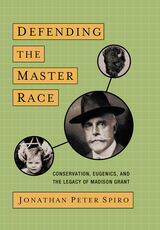
Defending the Master Race
Conservation, Eugenics, and the Legacy of Madison Grant
Jonathan Spiro
University Press of New England, 2008
Scholars have labeled Madison Grant everything from the “nation’s most influential racist” to the “greatest conservationist that ever lived.” His life illuminates early twentieth-century America as it was heading toward the American Century, and his legacy is still very much with us today, from the speeches of immigrant-bashing politicians to the international efforts to arrest climate change. This insightful biography shows how Grant worked side-by-side with figures such as Theodore Roosevelt to found the Bronx Zoo, preserve the California redwoods, and save the American bison from extinction. But Grant was also the leader of the eugenics movement in the United States. He popularized the infamous notions that the blond-haired, blue-eyed Nordics were the “master race” and that the state should eliminate members of inferior races who were of no value to the community. Grant’s behind-the-scenes machinations convinced Congress to enact the immigration restriction legislation of the 1920s, and his influence led many states to ban interracial marriage and sterilize thousands of “unworthy” citizens. Although most of the relevant archival materials on Madison Grant have mysteriously disappeared over the decades, Jonathan Spiro has devoted many years to reconstructing the hitherto concealed events of Grant’s life. His astonishing feat of detective work reveals how the founder of the Bronx Zoo wound up writing the book that Adolf Hitler declared was his “bible.”
[more]
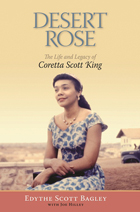
Desert Rose
The Life and Legacy of Coretta Scott King
Edythe Scott Bagley with Joe Hilley
University of Alabama Press, 2012
Details Coretta Scott King's upbringing in a family of proud, land-owning African Americans with a profound devotion to the ideals of social equality and the values of education
[more]
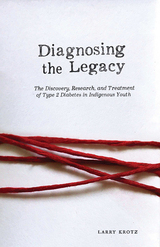
Diagnosing the Legacy
The Discovery, Research, and Treatment of Type 2 Diabetes in Indigenous Youth
Larry Krotz
University of Manitoba Press, 2018
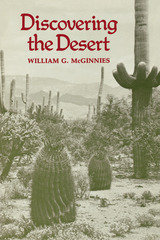
Discovering the Desert
The Legacy of the Carnegie Desert Botanical Laboratory
William G. McGinnies
University of Arizona Press, 1981
Now you can share the experiences of the first U.S. scientists who set about discovering the nature of North American deserts. "This is a fascinating account of how these pioneer ecologists laid the foundations for our modern knowledge of plant adaptation to desert environments. . . . It is well done." (American Scientist)
[more]
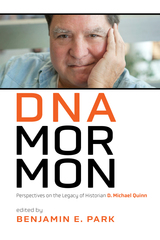
DNA Mormon
Perspectives on the Legacy of Historian D. Michael Quinn
Benjamin E. Park
Signature Books, 2022
Few lives have been as consequential for modern Mormonism as D. Michael Quinn. The son of a Mexican immigrant father and a California Mormon mother, Quinn became an influential participant in the New Mormon History movement. Much of his scholarly work remains classic in the field. Yet while he was publicly celebrated for his award-winning books and articles, he privately struggled to reconcile his sexuality with his faith. Eventually, his revisionist scholarship and homosexuality placed him in the crosshairs of church leaders, and he was excommunicated as one of the September Six in 1993.
This compilation is a rigorous and riveting assessment of Quinn’s legacy. In this volume, scholars examine him as a historical figure who helps us better understand modern Mormonism. They also probe his role as a historiographical titan. These essays enable us to analyze his influence on scholarship that both preceded and followed him. More than an investigation into his life and work, DNA Mormon uncovers the world in which he lived.
This compilation is a rigorous and riveting assessment of Quinn’s legacy. In this volume, scholars examine him as a historical figure who helps us better understand modern Mormonism. They also probe his role as a historiographical titan. These essays enable us to analyze his influence on scholarship that both preceded and followed him. More than an investigation into his life and work, DNA Mormon uncovers the world in which he lived.
[more]
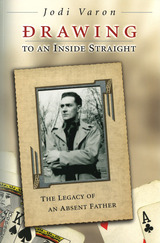
Drawing to an Inside Straight
The Legacy of an Absent Father
Jodi Varon
University of Missouri Press, 2006
Life can sometimes hinge on the turn of a card—not only the gambler’s life but also the lives of those close to him. For Jodi Varon, one fateful turn changed her father’s life—propelling her into a search far from home that will lead readers to a new contemplation of family ties and lost cultural legacies.
Benjamin Varon never rode a horse and preferred his beef hanging in a cooler, but he still thought of himself as a cattleman—that is, until he disappeared after losing his meat-supply business in a high-stakes poker game. In recalling how a hardscrabble New Yorker sought his fortune in Colorado’s cattle country, Varon also relates a daughter’s quest to understand and forgive.
Drawing to an Inside Straight is a bittersweet story of growing up in Denver during the 1960s. As Varon recalls life at home with parents Benjamin and Irene—Jews of decidedly different backgrounds, he a Ladino-speaking Sephardi from New York, she a Yiddish-speaking Ashkenazi from Denver’s close-knit Jewish community—she tells of a childhood nourished by pireshkes and cronson, hamantashen and challah. These stories and other culinary delights are contrasted with her father’s childhood of stolen fruit and his longing for the aromas of the Mediterranean spice markets of his ancestors.
Against the backdrop of America in the Vietnam era, and amid tales of Joseph McCarthy’s tyranny, Burma-Shave divination, domestic nerve-gas stockpiling, suburban wife-swapping, murder, and suicide, Varon offers an intriguing look at Sephardic history and culture. Behind her own story looms that of Benjamin, who transformed himself from an immigrant’s son sneaking into Yankee Stadium, to a tough GI, to a quixotic dreamer willing to stake his hard-won business in a game of chance.
Rather than cast off his European past, Benjamin embraced it, insisted upon it, tried to celebrate what was different. All the while, he was dogged by his favorite Ladino adage—“We left on a horse. We came back on a donkey”—which served to remind him of the caprices of fortune that would follow him to that fateful poker game. Varon’s story of her own journey to Spain, in search of her father’s lost heritage and his adoration of the Sephardim’s Golden Age, helps seal her understanding as it heals wounds left open too long.
Varon’s account is an insightful view of what it means to be American without losing one’s past to the proverbial melting pot, with its insider’s look at Sephardic culture and depictions of Denver’s ethnic communities that challenge stereotypes of the Anglo-American West. Drawing to an Inside Straight is a book that will make an immediate connection with readers—even those whose fathers weren’t compulsive gamblers—who struggle with mixed emotions about childhood or are in search of their own roots.
[more]
READERS
Browse our collection.
PUBLISHERS
See BiblioVault's publisher services.
STUDENT SERVICES
Files for college accessibility offices.
UChicago Accessibility Resources
home | accessibility | search | about | contact us
BiblioVault ® 2001 - 2024
The University of Chicago Press









